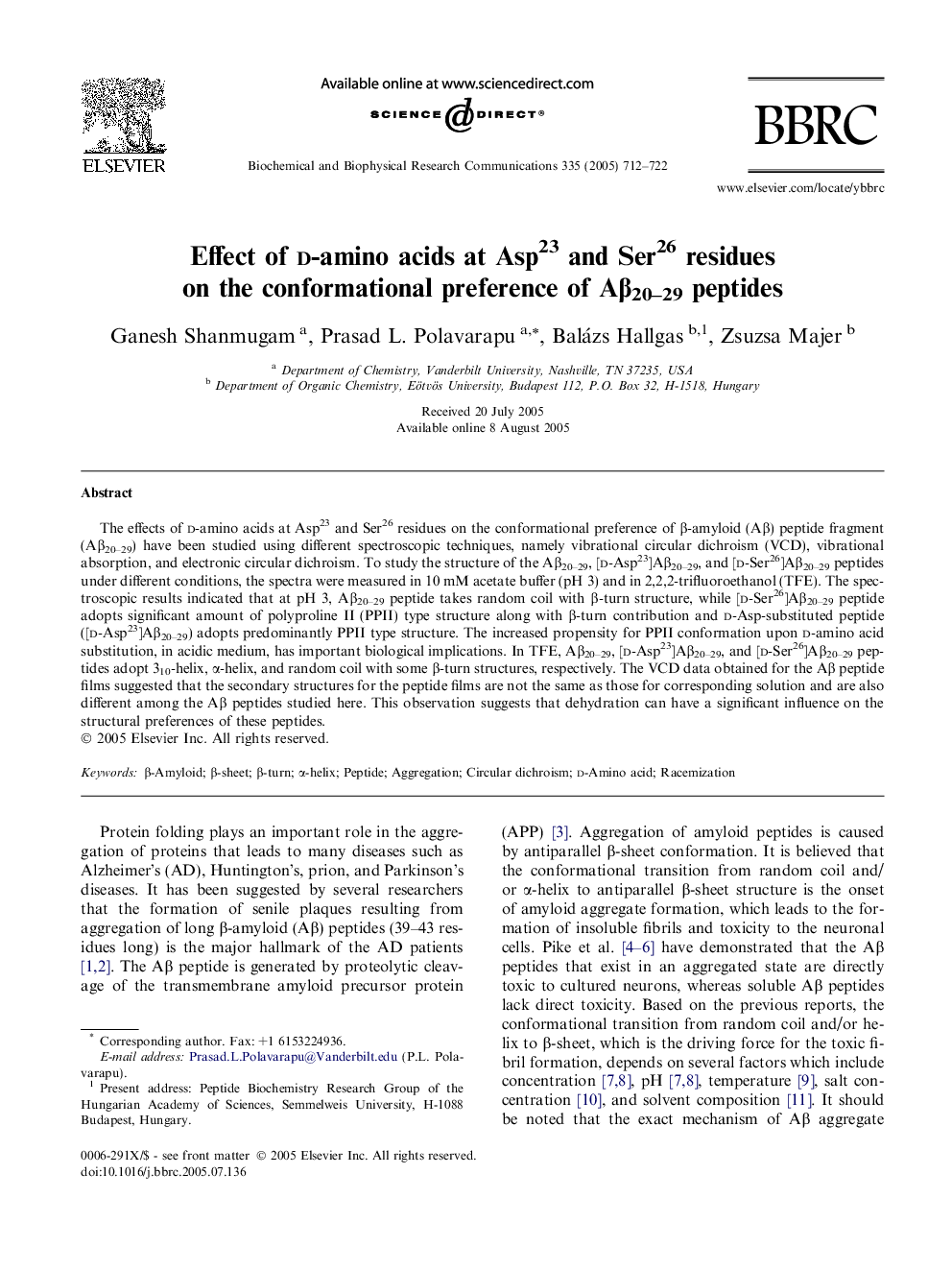| Article ID | Journal | Published Year | Pages | File Type |
|---|---|---|---|---|
| 10768720 | Biochemical and Biophysical Research Communications | 2005 | 11 Pages |
Abstract
The effects of d-amino acids at Asp23 and Ser26 residues on the conformational preference of β-amyloid (Aβ) peptide fragment (Aβ20-29) have been studied using different spectroscopic techniques, namely vibrational circular dichroism (VCD), vibrational absorption, and electronic circular dichroism. To study the structure of the Aβ20-29, [d-Asp23]Aβ20-29, and [d-Ser26]Aβ20-29 peptides under different conditions, the spectra were measured in 10 mM acetate buffer (pH 3) and in 2,2,2-trifluoroethanol (TFE). The spectroscopic results indicated that at pH 3, Aβ20-29 peptide takes random coil with β-turn structure, while [d-Ser26]Aβ20-29 peptide adopts significant amount of polyproline II (PPII) type structure along with β-turn contribution and d-Asp-substituted peptide ([d-Asp23]Aβ20-29) adopts predominantly PPII type structure. The increased propensity for PPII conformation upon d-amino acid substitution, in acidic medium, has important biological implications. In TFE, Aβ20-29, [d-Asp23]Aβ20-29, and [d-Ser26]Aβ20-29 peptides adopt 310-helix, α-helix, and random coil with some β-turn structures, respectively. The VCD data obtained for the Aβ peptide films suggested that the secondary structures for the peptide films are not the same as those for corresponding solution and are also different among the Aβ peptides studied here. This observation suggests that dehydration can have a significant influence on the structural preferences of these peptides.
Related Topics
Life Sciences
Biochemistry, Genetics and Molecular Biology
Biochemistry
Authors
Ganesh Shanmugam, Prasad L. Polavarapu, Balázs Hallgas, Zsuzsa Majer,
